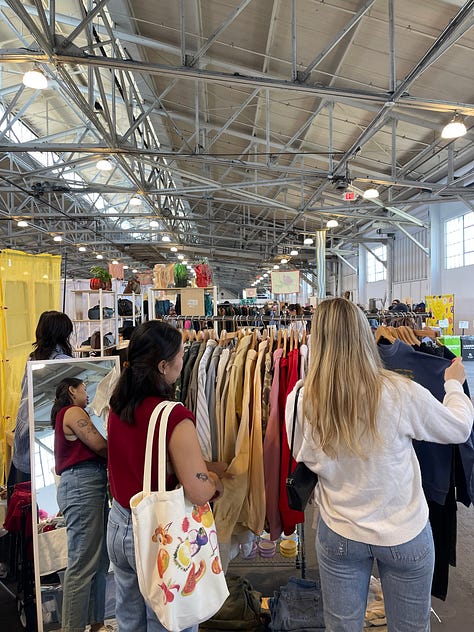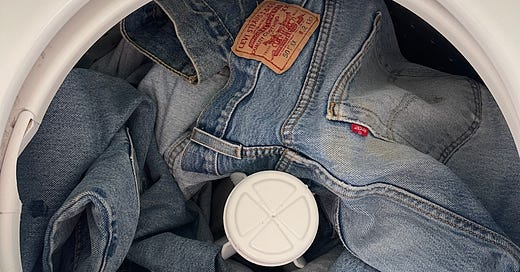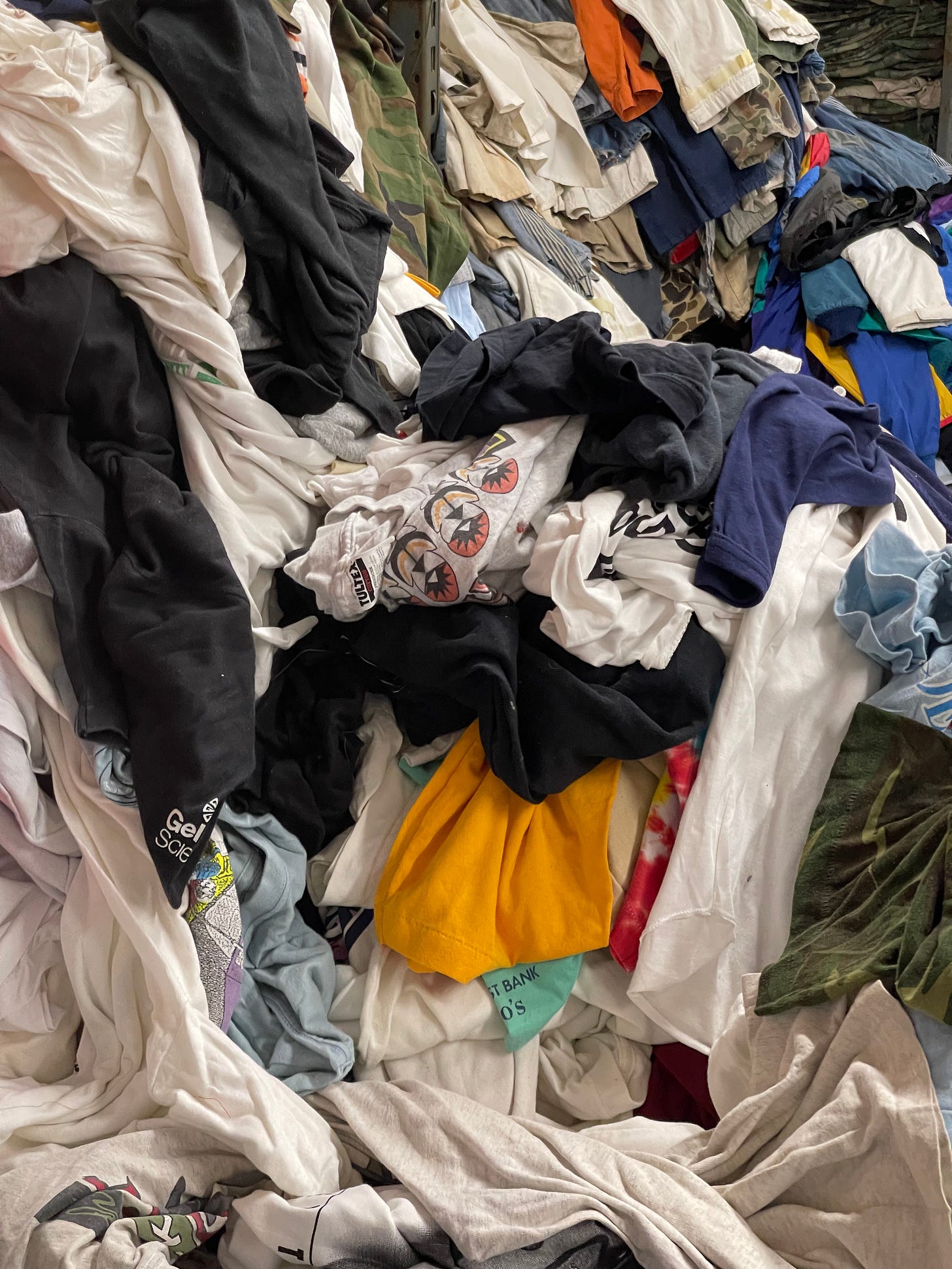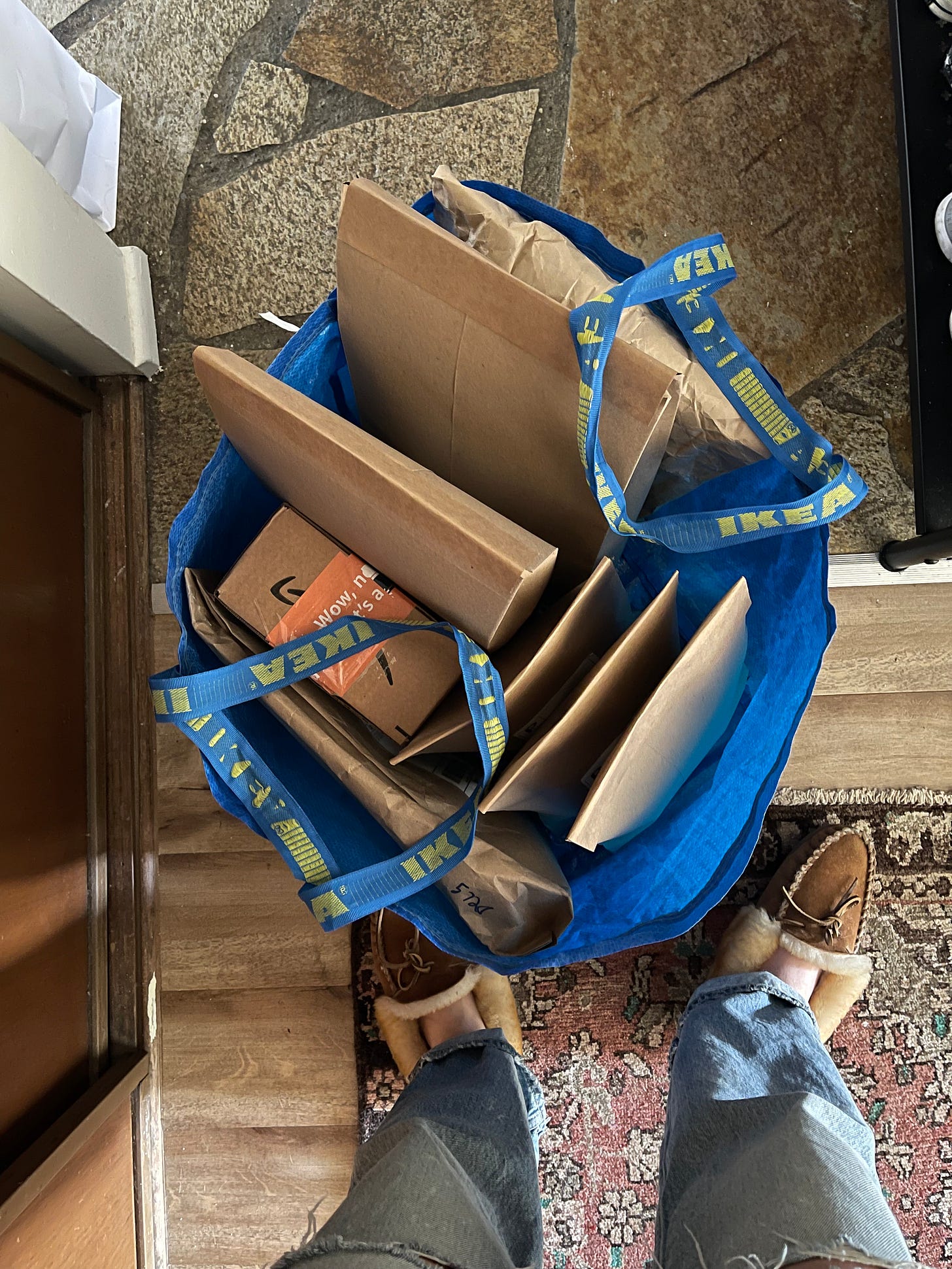Sourcing & Pricing FAQ - the basics
what goes into determining the cost of a vintage / second-hand item
First I want to touch on how amazing this article and it’s subsequent content around the myths of running a vintage business ( see below ). Emily compiled and digested real world data from real vintage sellers; and while I’m actually not surprised that most people are pressed to make a living being a vintage curator / re-seller ( it is really really hard, takes a lot of smart moves, and multiple income streams ) - the more depressing truth is that even in a female dominated space, women still make less money than men. Woof.
On that note - let’s break down the cost of what goes into pricing vintage / curated goods / second-hand clothing - so that business owners and consumers alike can get a feel for what goes into each piece you come across, as well as give business owners the power and confidence to stick up for their prices.
From start to finish - here is an ( almost ) complete list of each thing that would go into something you would find on a rack of curated goods at either a brick and mortar, pop-up or market rack. ( watch the original reel from my IG )
— time spent sourcing ( i.e. driving to all the thrift stores, getting up at 4am to do estate sales, and all the other fun things we do to find things )
First we have to get the inventory - which can come from so many different places. Some sellers dig through the “bins”, others head to estate sales, while fewer still source from wholesalers, rag houses, overseas and/or private estates. This takes the most time and energy, in addition to the work to network, build relationships, travel and more. For every 100 pieces of clothing we look at, maybe only 3 or 4 are viable to sell.
Side note: the “common myth” that re-sellers are taking all the good inventory from thrift and charity shops / are the reason prices are going up are simply wrong. A ) everything across the board is getting more expensive ( i.e. rent, wages and amount of stuff to sort ) - this drives up the price of what thrift shops sell. B ) the reason there is “less good stuff” is directly correlated to the rise of fast fashion in the last 2 decades. As someone who sources ( and yes certain things are getting harder to find ) I can tell you there is PLENTY OF GOOD CLOTHING out there. You just have to know where to look. Which is why I think what we do is pretty important. We connect you to really good, special, well-made, beautiful things that might otherwise end up in a landfill. / end rant
— gas money and travel costs ( which just keep getting more and more $$ )
This is real - especially if you have to drive out of the city to find better items/prices for your inventory, or travel out of state to work with wholesalers.
— laundering, sooooo much laundry. and dry cleaning. or shipping specialty items across the country like for the vintage fur and leathers I sell.
— cleaning and repairs, whether that’s spot treating, fixing buttons, having things reworked, up-cycled etc.
This is going to be the biggest difference between “thrifting” something for $5 at a Goodwill, vs. buying a curated item from a vintage shop for $50 - we have taken the time to clean, repaire and ensure what you are getting is pretty to look at, accessible to purchase and ready for you to wear.
— item and price research ( which covers things like trying to find out what decade something is from, and it’s market value. )
We have to make sure we know what we are selling is worth selling - and when something is rare, special or extra hard to find. This ensures we don’t undercut the market, or over-price something that may be a really good dupe.
— photography, measuring, writing those product listings, and posting across all the online platforms we sell on!
— marketing ( reels anyone!? ) and answering questions :)
— shipping supplies, postage and running to the post office ( sometimes multiple times a week )
And lastly, this does not even account for the rest of the bigger picture business expenses, like a storage unit, website fees, credit card fees, taxes, booth and shop fixtures, tags and more.
All of this so you can follow your favorite shop that matches YOUR aesthetic and vibe, so you don’t have to do any work except wait and watch pretty new goods comin’ atcha!



This information is merely to offer a glimpse into the back end of all the hard work EVERY SINGLE CURATOR I KNOW puts into their shop - whether it’s online, instagram, a pop up, etc.
so, when you see the price of something ( especially from a highly curated shop ) know that there’s a lot of thought and hard work going into that. and I really try to do my best to price in a fair and meaningful way. I mean, you *could* buy a cheap fast fashion tee from that big retail store, OR buy something super rad and unique from a small business that keeps production of new goods down, and keeps you looking fly AF. There’s just too many amazing things that already exist on this planet, waiting for someone to uncover and give new life to. let us do the hard work for you so you can enjoy some beautiful clothes / keep things out of the landfill and help out the planet.
Thanks for supporting slow and sustainable fashion - please help by sending this post to a friend who may be interested in following along!
xx M
Michelle Moore is a Seattle-based creative, vintage curator, photographer, writer and educator. You can catch her at an up-coming pop-up, swing by on a night she’s hosting at the restaurant in Ballard, order one of her hand-knit Beanies, or hire her to host & plan your next event.
connecting you with good clothes + good people.










Hi Michelle! I'm a vintage dealer of over nearly ten years and so excited to see another dealer over here on Substack!
I so relate and appreciate the time you put into this article. I think long form/slow content laying out the work that goes into being a curator is very important in actually grabbing people's attention long enough to think deeply about what is behind a piece of clothing in a local vintage shop.